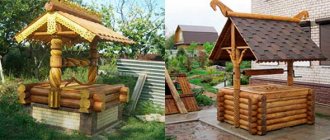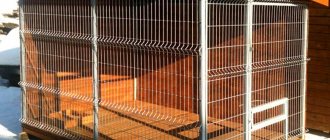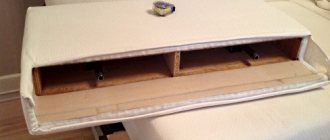You don’t have to be a professional furniture maker to make a beautiful and practical chair for your home. The main thing is to choose the right materials and tools, show your imagination and stock up on free time and patience. By deciding to make chairs for your home from wood, you will fill the interior with a special atmosphere of warmth and comfort. This material combines harmoniously with glass, stone, textiles and even metal.
Popular and beautiful models
The most common models of chairs among home furniture makers are:
Massive products. Such designs are the easiest to manufacture .
There are no curly lines here. Therefore, the item is suitable for beginners to craft. The massive chair is practical and easy to use. It is stable and fits well into different designs.Its only drawback is its large size, which does not allow furniture to be installed in cramped and small spaces.
When choosing such a model for a dining room or kitchen, you should choose original designs that differ from the standard options. It is better to make the frame of the chair from solid wood.
In this case, carved legs and an elegant back made of slats will look good. The seat can be made of plywood and covered with textiles.
Folding beds. This option is more appropriate for street use .
A chair made of natural wood, which is lightweight and quickly folds and unfolds, is useful for an outdoor picnic. It is compact in size and light in weight. Also, such a piece of furniture can be installed in the garden, on the terrace, or on the balcony.As for the dimensions of a folding chair, you should choose models with a height of 75 cm, a width of 39 cm, and a height from the floor to the seat of 30-35 cm.
- Armchair chair. It is a little more complicated to make and requires the experience of a carpenter. But such a piece of furniture will fit harmoniously into the recreation area. Its dimensions can be similar to those of massive models, or larger or smaller.
Advice : novice craftsmen should opt for classic massive products.
Therapeutic effect of orthopedic structures
An orthopedic knee chair is recommended both for healthy people who want to maintain their supporting apparatus into old age, and for patients with medical prescriptions:
- In case of osteochondrosis, osteoporosis, intervertebral hernias and prolapsed discs, by relieving tension with the correct position of the back and spine, there is a significant reduction in pain symptoms and a retreat of the disease.
- Correct posture helps restore the natural curves of the spinal column in mild to moderate scoliosis, completely preventing its development in the future.
- Since the load is transferred from the buttocks to the legs, the use of a kneeling chair reduces to zero the development of hemorrhoids - a disease of people leading a sedentary lifestyle. If present, the symptoms weaken over time, and complete recovery may even occur.
Despite all the positive characteristics and health benefits, in some cases the use of this piece of furniture is not possible:
- Due to standard sizes, it is impossible to choose a chair for small children.
- If a person has bad knees, using such a chair will lead to pain and aggravation of the condition of the joints.
- Individual characteristics of the body that do not allow loading the leg muscles.
Many owners of this wonderful invention recommend alternating its use with conventional orthopedic chairs so that the frequency of loads in the sitting position changes.
Diagram and drawing with dimensions
Before making any piece of furniture, you need to think about its design, the materials from which it will be made, and its dimensions. After this, a drawing is created in a variety of ways convenient for you:
- drawn by hand on a piece of paper;
- is on the Internet;
- created using a special program on a computer.
This drawing must indicate the exact dimensions of all individual parts and options for connecting them to each other.
The standard dimensions of a simple chair with a backrest are:
- height - 88 cm;
- width - 43 cm;
- height from floor to seat - 45 cm.
Benefits of a kneeling chair
When choosing an orthopedic chair for a schoolchild or a person with musculoskeletal problems, you should pay attention to a knee-type chair. Its design ensures reflex straightening of the back without stress on the muscles and joints of the spine. Sitting on such a chair, the back behaves the same as in a standing position.
For children, orthopedic chairs with a knee support are simply irreplaceable. At this age, the musculoskeletal system is formed, and incorrect position of the back while sitting leads to the development of curvatures and other pathologies.
The advantages of this piece of furniture include the following:
- Reducing the load from the back and redirecting it to the leg muscles.
- A straight back ensures straightening of the thoracic spine. This leads to full breathing and reduced pressure on internal organs.
- Without much effort, correct posture is formed.
- Blood circulation in the thighs is normalized.
- Recommended for use even during pregnancy.
There are also some design disadvantages: torso slipping, knee pain and foot numbness, but all of them are easy to avoid. You just need to get up for a few minutes every hour and give the wounded parts of your body rest.
Tools
Tools you will need:
electric jigsaw or wood saw;- sanding machine or sandpaper of varying degrees of grain;
- drill with a set of drills;
- self-tapping screws;
- screwdrivers or screwdriver;
- furniture stapler;
- hammer.
Prepare from materials:
- lumber (in our case, boards and plywood for seating);
- stain;
- paints and varnishes;
- brush;
- upholstery fabric;
- wood glue;
- foam rubber
Wood selection
The following types of lumber may be required to make a chair:
- Boards.
- Array.
- Logs.
- Bars.
Most often, several materials are used simultaneously. Why are there logs on this list? If you have the appropriate equipment, you can make boards and other blanks yourself. There are also original ideas on how to make a chair from a log. You can see some of these ideas in the photo section at the end of the article.
As for the choice of lumber, it should not have knots, cracks or fungal diseases.
Methods for cutting logs
Be careful when choosing wood, as it is often stained for a better look.
In general, lumber must meet the following parameters:
- There should be no cracks on the bars, the edges should be smooth, and the material itself should be dry. Small deviations in skew are allowed.
- The boards must be up to 100 mm thick.
- The type of solid wood must be suitable for making the chair. It must be strong enough and durable. In most cases, the choice falls on oak or mahogany. They are easy to process and are durable and strong.
- Pine or beech is also used. These types of wood are no less popular and practical.
When purchasing, do not take all materials back to back. Be sure to take a little extra.
Progress
Preparation of wooden elements
So, when starting the work process, place the drawing near you to avoid mistakes in the manufacture of parts. For our model of a chair with a back, you will need to cut out the following individual elements:
2 rear legs measuring 38 by 75 by 1075 mm;- 2 front legs - 38 by 38 by 445 mm;
- upper backrest lintel 20 by 90 by 475 mm;
- lower backrest jumper with dimensions 20 by 50 by 475 mm;
- central backrest bar 12 by 100 by 475 mm;
- 4 external backrest strips measuring 12 by 50 by 475 mm;
- 2 side arched lintels 20 by 75 by 475 mm;
- 2 side lower jumpers 20 by 50 by 475 mm;
- 2 side central strips 12 by 100 by 255 mm;
- 2 side external strips 12 by 50 by 255 mm;
- 8 side external strips with dimensions 12 by 50 by 255 mm;
- 2 front and two rear arched lintels measuring 20 by 75 by 475 mm;
- 2 front and rear drawer elements - 20 by 38 by 475 mm;
- 2 side elements of the drawer - 20 by 38 by 475 mm;
- 4 seat support bars 20 by 20 by 395 mm;
- one seat made of plywood with dimensions 20 by 435 by 435 mm;
- 1 lower backrest jumper 20 by 50 by 475 mm.
How to do it?
So, after all the materials and tools are prepared, you can start making your own chair with a back made of natural wood. The workflow will look like this :
We cut out the legs. To do this, we make two parts, the thickness of which will be 3.8 cm, width - 7.5 cm, height 107.5 cm.- We measure on the legs the place where the horizontal jumpers are attached.
- We make two front legs, which will be much shorter than the back ones. Their height will be 42 cm.
- We process all cut parts with a grinding machine or sandpaper.
- We make markings and, using a cutter or chisel, select grooves for attaching the legs and jumpers.
- We make 2 horizontal and 5 vertical jumpers, the length of which will be 47.5 cm.
- We make grooves in the horizontal elements.
- Assembling the back. At the same time, we coat all fastening points with wood glue to improve the strength of the product.
- Now let's start making the side inserts. Namely, the upper arched parts and the lower crossbars. Since these elements will be identical, it is better to make a template from MDF . Now we grind all the parts and make grooves on the arched elements.
- We insert the strips into the tenons and coat the joints with glue. After the glue has completely dried, you can attach the attachment points with screws.
- Next, we put decorative plugs on the screw holes.
- Now let's start installing the seat supports. We screw them to the crossbars with screws, making holes for them in advance.
- Now we assemble all the finished elements together: glue the jumpers to the rear legs, fix the parts with clamps and screw in the screws.
- Next, we glue the side elements of the drawer and inserts to the finished back.
- Now we glue the arched lintel with the front drawer and legs.
- We carefully place the resulting structure onto the sidewall spikes.
- We fix the parts with clamps and screw in the screws.
That's the whole process of assembling a chair with a wooden back with your own hands. For those who have never encountered making such a piece of furniture, the work process may seem quite complicated at first. Therefore, it is better for beginners to start by assembling a simple stool.
After making a chair with your own hands, you need to carefully sand all surfaces, cover them with stain and paint materials.
The varnish is applied to the chair in two layers. The second layer is applied only after the first has completely dried .
The seat of the chair must be covered with textiles. Various fabrics are suitable for these purposes (leather, substitute, chenille, jacquard, tapestry). Before you start covering the seat with fabric, a small layer of foam rubber is glued to the plywood and then the fabric is fastened to the underside of the seat using a furniture stapler.
If you don't have a furniture stapler, you can nail the upholstery with small furniture nails.
Tip : To prevent the chair from scratching the flooring, you can attach rubber or felt pads to its legs.
Decoration
Furniture assembly work ends with decoration. Before decoration, the surfaces are treated with sheets of sandpaper and coated with clear varnish. Decoration is carried out using the techniques of decoupage, patination, engraving, simple or artistic coloring, etc.
Wood carving allows you to create original patterns and engravings. The design can be contour, geometric, relief, etc. Fine carving will give the room lightness and airiness. After engraving, the product is coated with transparent varnish or thick paint. The design method is suitable for rooms in the Art Nouveau, Baroque, and Shabby Chic styles.
Antique chairs are decorated with your own hands using decoupage techniques. Furniture is complemented with floral prints or reproductions of art paintings, artificially aging the surface. The work is completed by varnishing the surfaces. The decor will suit rooms in retro, vintage, Provencal styles.
Coloring allows you to harmoniously fit furniture into the interior, making models contrasting or neutral. When applying enamel, it is possible to use patination techniques, stylization like marble and glass. Paints can be translucent or dense depending on the interior design.
What paint to paint homemade furniture?
Thanks to the finishing, the aesthetics of the furniture item not only increases, but also its service life is extended. To preserve the beautiful natural texture of wood, you should choose transparent varnishes . If the chair will be used outdoors in bad weather conditions, you should choose a reliable varnish, for example, yacht or alkyd PF 170. To use furniture in the house, ordinary furniture varnish will work. If you have chosen a nitro varnish that dries quickly, but at the same time emits a pungent odor during operation, try to paint the chairs either in the fresh air or in a well-ventilated area.
Advice : if the chair seems too complicated to you, try assembling a stool from wood, plywood or chipboard. And for connoisseurs of comfort, we recommend taking a closer look at chairs made from pallets and tires.
What is a kneeling chair and how is it different from a regular chair?
Any orthopedic chair is designed to provide not only comfortable sitting, but also benefits for human health. For many decades, scientists have been trying to find a design that would fully meet these requirements.
At the end of the last century, Dr. Mendel found that the most useful chair is one whose seat is located at an angle of 15° relative to the horizon. However, such a slope caused the body to slide under the force of gravity. In order to eliminate this shortcoming, many studies were carried out, as a result of which a chair appeared with a footrest in a half-bent position, on which one stood with one's knees.
A feature of the kneeling chair is the redirection of the load from the lower part of the spine to the muscles of the legs, while maintaining a vertical position of the back, the shoulders remain straightened.
Since its inception, when the chair had only a seat and a knee rest, its design has acquired many innovations. Models with wheels and a back, with static support and in the form of a transformer, with an arched support that allows the sitter to swing, corset chairs appeared.
The most suitable model is selected taking into account the person’s weight, height, medical recommendations and individual preferences.
Photo
Ideas for decorating the resulting result can be seen in the following photos:
Additional Tips
If you make furniture from solid wood, it is important to ensure that it is not only beautiful, but also safe. This is especially necessary if there are small children in the house. So, all surfaces and corners of boards and bars must be sanded. Then they should be painted or treated with stain and varnish. As for the latter, it is better to use one that is odorless - water-based. This way you can be sure that the coating is harmless.
It has already been said above what kind of wood chairs are usually made from. But there are some nuances here too. Red rocks, for example, look simply gorgeous and have a beautiful structure. Linden is lighter than oak, but with the help of stain it can be tinted to match it. Carved chairs look beautiful in elegant interiors. So if you have carving skills, do not miss the opportunity to practice on the back and even the legs of the product.
If you are making furniture for a baby, do not use metal corners, because he can get hurt on them. The parts can be connected with screws or dowels. To make the structure more stable, simply choose thicker parts.











